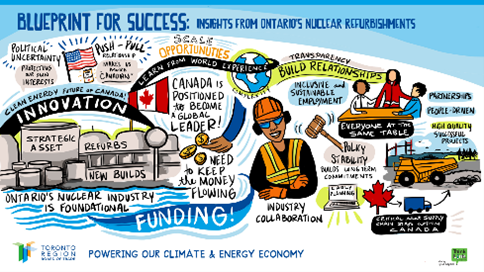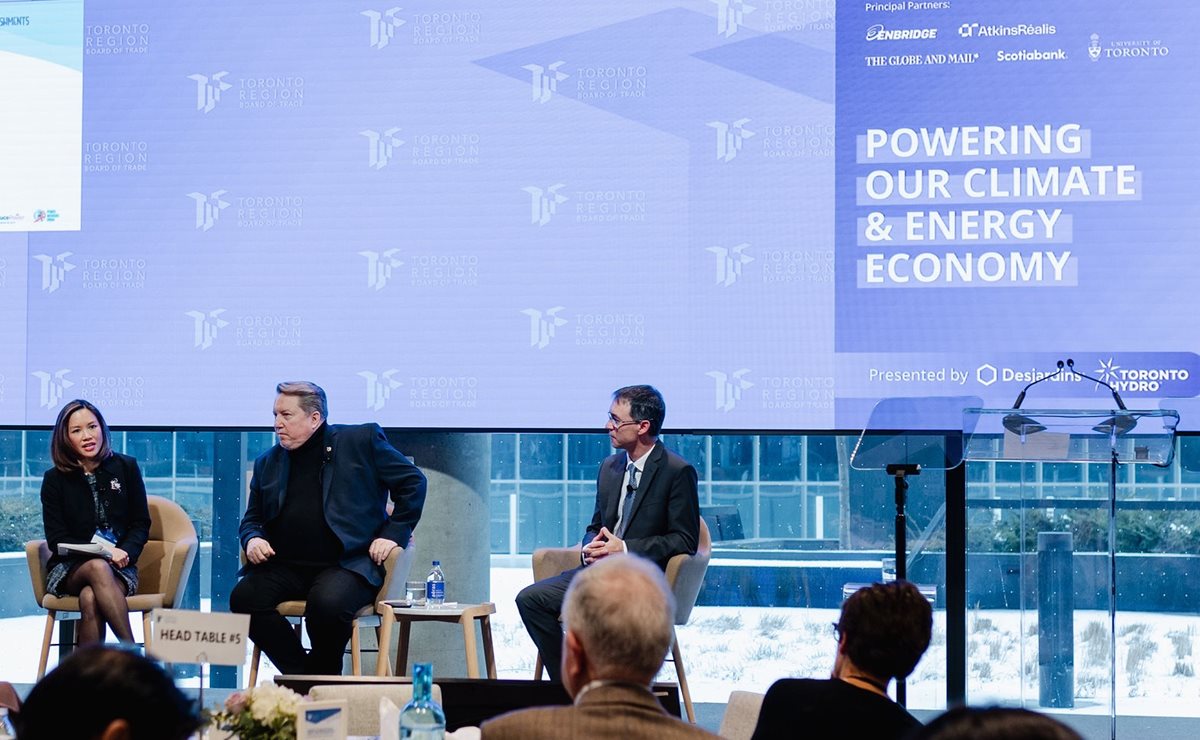Ontario’s electricity demand is projected to rise by up to 75% by 2050, requiring rapid modernization of the province’s energy infrastructure. While other industries often face delays and cost overruns, Ontario’s nuclear sector has consistently delivered projects on time and on budget. To understand why, we spoke with Jennifer Wong, National Power Generation Lead at Accenture, who moderated a key panel at the Powering Our Climate & Energy Economy Symposium.

Reflecting on the panel you moderated, what were some of the most important insights?
Jennifer Wong: It was a really interesting panel. I got a chance to sit down with Dan Playfair from Bruce Power and Jeff Parnell from the Power Workers' Union. I think one of the biggest takeaways is that you can't be a utility and work in isolation. It really takes the support and the skill sets of the entire industry to bring a large project like that into fruition.
Dan talked about working with suppliers to develop innovative techniques to accelerate their project schedule. Jeff highlighted the importance of workforce coordination—especially with multiple refurbishments happening simultaneously at Darlington and Bruce Power. What really stood out was the collaboration between Bruce Power and OPG to ensure the success of each other’s projects.

Ontario’s nuclear sector delivers on time and on budget, a rarity in large infrastructure projects. What’s behind this success?
JW: I think the industry has benefited from historical projects and lessons learned. It’s a self-learning industry that is very collaborative when it comes to sharing operational experience.
There’s a global network of utilities that share insights so others can avoid similar problems. If one facility identifies a constructability or operability issue, that knowledge is shared widely so that other utilities can proactively address the risk before it impacts their projects.
It also comes down to how the nuclear industry approaches risk and accountability. Every project begins with extensive front-end planning, there’s a deep focus on identifying challenges before they arise. This includes rigorous workforce training, robust safety protocols, and cross-industry collaboration to refine best practices. There’s an understanding that nuclear success depends on collective performance. Whether it’s a contractor, supplier, or plant operator, everyone is treated as part of the same team, working toward a shared goal.
With Ontario planning new nuclear projects, how do we ensure we have enough skilled workers?
JW: If we’re going to build another two, three, or four plants, we need to think about who will operate them in the future and how to transfer knowledge from experienced professionals.
Utilities are working closely with academic institutions like McMaster, which just unveiled a new cross-disciplinary Nuclear Civic Studies program. It’s designed to provide a broader perspective beyond just engineering and science.
We also need to inspire young people at the primary and junior levels to develop a love for science and technology. The industry is evolving rapidly, and the next generation needs both technical skills and an inherent sense of curiosity to adapt to new challenges.
Public sentiment around nuclear has shifted in recent years. What’s driving that change?
JW: I remember the Fukushima incident and how that changed everything. The nuclear community did a lot of introspection - reviewing designs, safety margins, and redundancy measures to mitigate future risks.
Over time, the conversation on climate change took center stage. The need for reliable, low-carbon energy made people take another look at nuclear. Wind and solar are great, but they don’t provide steady baseload power like nuclear does.
We’re also seeing renewed national pride in nuclear. Canada has deep knowledge in reactor technology and a strong supply chain. That positions us well as a leader in the global energy transition.
There’s been talk about nuclear energy playing a role beyond Earth. What’s happening in that space, and how realistic is it?
JW: It’s fascinating! Canadian Space Mining Corporation is advancing a micromodular reactor, called SLOWPOKE-2, for deployment on the moon. Their CEO, Daniel Sax, has secured an agreement to further develop and license this reactor for potential use in space.
The idea is that as we explore space, whether for mining, research stations, or even future settlements, reliable and compact power sources will be essential. Nuclear offers the ability to generate continuous energy in environments where solar and other renewables might not be viable. This project is still in development, but it speaks to the broader potential of nuclear beyond just traditional power generation.
We’re already seeing nuclear technology expand into other areas on Earth as well, AI data centers, district heating, and even providing clean energy for remote communities. It’s no longer just about grid power; nuclear is becoming a critical tool for solving some of our biggest energy challenges, whether on Earth or beyond.

What can the business community do to support nuclear development?
JW: First, recognize how critical nuclear is to the growth of our economy. Demand for electricity is growing exponentially with electrification. AI-driven industries will also require reliable power sources.
Second, support funding and partnerships. We often hear about public-private partnerships in other industries, but less so in nuclear. Whether it’s large reactors or SMRs for remote communities, business investment will be key.
And finally, keep an open mind. People assume big nuclear projects will be over budget and delayed, but in Ontario, that hasn’t been the case. Understanding why and engaging with the industry can help dispel misconceptions.
We have published a framework, co-authored with the World Economic Forum that details accelerating advanced nuclear and SMR deployment.

